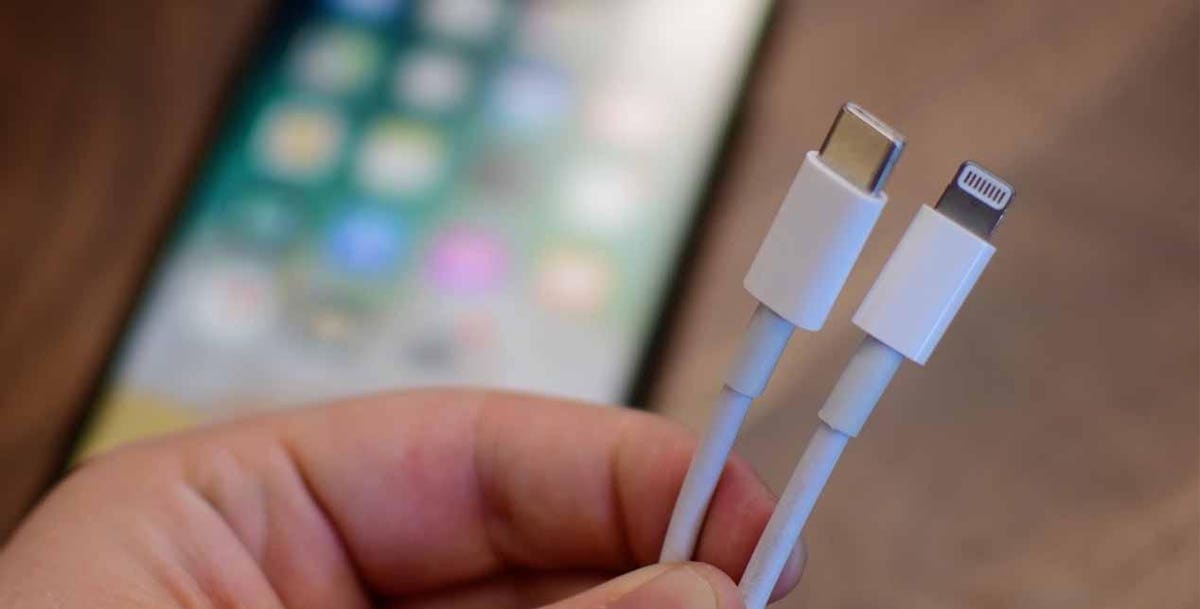As I write this, it’s just a few short days until Apple’s next special event, during which it’s widely expected—obviously so, if you pay attention to patterns—the company will introduce the next generation iPhone.
One of the marquee features of this new line of iPhones is the switch from Lightning to USB-C. Most industry watchers, such as my good friend John Gruber at Daring Fireball, have expressed excitement for this change for two reasons. The first is convenience. The nerds all are clamoring for the iPhone to adopt USB-C because they want One Cable to Charge Them All, especially when traveling. The second reason is, as Gruber focuses on, data transfer. Particularly on the iPhone Pro models, faster Thunderbolt speeds will be a huge boon for those who need (or want) to transfer large files from their phone to their computer.
All told, both reasons are logical and valid—except for the fact people are missing a key plot point to this story. As ever, it’s accessibility.
Although probability is high Apple will tout USB-C as a gotta-have-it feature of the new models, switching from Lightning to USB-C really isn’t noteworthy when considered from an accessibility point of view. It’s a lateral move. In terms of hand-eye coordination, USB-C does absolutely nothing to better the situation. Going all-in on USB-C may be convenient, but convenience and accessibility aren’t the same thing.
They’re close yet distinct cousins.
Here’s the problem in a nutshell: not everyone can plug stuff in. There are legions of disabled people who have iPhones, this reporter included, whose disabilities make it such that plugging in anything can be—and oftentimes is—an adventure. The reality is there are people whose eyesight and/or fine-motor skills make inserting or removing, say, a nice new USB-C cable an exercise in frustration, if not downright impossible. In the iPhone’s case, MagSafe charging is a bulwark against this problem, but doesn’t negate it altogether. Whether Lightning or USB-C—even the 30-pin iPod connector of yore, for that matter—the fact remains these cables are not at all accessible to a large swath of people. Any gains in convenience and performance don’t trump accessibility concerns.
What would be truly innovative is if Apple somehow could fuse USB-C with MagSafe, essentially adapting the MagSafe on MacBooks to work on the iPhone (and iPad). (Lest you want to interject, the fact USB-C is an industry standard is immaterial to the nuanced point I’m making in this piece.) However nerdy I claim to be, I’m definitely no engineer; I can’t speak to the feasibility of merging the two in terms of delivering both power and data magnetically. Nonetheless, the salient point is USB-C would be a better spec if it were made accessible to everyone. To reiterate, not everyone has the dexterity to plug things in so effortlessly.
Personally, I can manage the status quo. I use Lightning and USB-C all the time, but ability is not always commensurate with ease-of-use. I can use a USB-C cable, but not very easily. It’s also worth mentioning the new Pro models are said to have color-matched, braided cables. If a magnetic USB-C connection is undoable, there is some consolation in the existence of these updated cables. The color-matching should be a win for cognition, while the added friction from the braided material should make inserting and removing the plug at least a little easier.
The moral here is simple: don’t take your tech for granted. Just because the tech reporters and analysts and YouTubers seem to be singing the same tune regarding USB-C doesn’t mean the change is unilaterally good for everyone—even if it is long past time to say goodbye to Lightning.
Read the full article here





